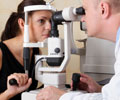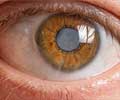Australia needs a comprehensive strategy to solve the problem of preventable blindness caused by cataracts among Indigenous Australians
Australia needs a comprehensive strategy to solve the problem of preventable blindness caused by cataracts among Indigenous Australians, according to an article in the latest Medical Journal of Australia.
Dr Susan Wearne, from the Centre for Remote Health at Alice Springs, in her article Remote Indigenous Australians with cataracts: they are blind and still can’t see, points out that the blindness rate among Indigenous Australians is one per cent, compared with 0.1 per cent among their non-Indigenous compatriots. The rates amongst Indigenous Australians are similar to rates in Indonesia, Nepal and Zimbabwe.Indigenous people are three times more likely than non-Indigenous Australians to report vision loss because of cataracts, but are four times less likely to have cataract surgery.
Dr Wearne found barriers to cataract surgery, including:
· Waiting lists: public hospitals use waiting lists to allocate services equitably - lists rely on reliable access to communication and transport and preclude opportunistic care.
· Cost: cataract surgery is free in public hospitals but its indirect costs are not for remote Indigenous Australians – food and transport, for example and loss of income.
· Distance and transport: uptake of cataract surgery is lower in rural and remote areas than in urban areas. In central Australia, patient travel services only pay for transport if travel is more than 200 km.
· Communication: interpreter services for Indigenous patients are patchy, despite English being the fourth or fifth language for many.
· Family influence: fears expressed by family and community are barriers to surgery, as are family dynamics, if the dominant member does not see the need for eye care.
· Community influence: remote Indigenous Australians have a 28 per cent chance of the natural lens capsule clouding over within five years of cataract surgery. Seeing others “going blind” again following surgery – albeit from a treatable cause – may affect fellow community members’ enthusiasm.
· Culture and belief: “Indigenous people have told me that the dust and environment or people ‘being sung’ cause eye problems,” Dr Wearne says. “Similarly, societal beliefs that cataract is just part of old age or God’s will act as barriers to cataract surgery.”
· Stoicism: cataracts grow slowly. People adapt and manage despite poor vision and literally to do not see the need for surgery.
· Fear: fear – of the operation, a poor outcome, that a real check-up will show a real problem and fear of death – is a significant barrier to surgery.
· Demographics: the most advantaged people undergo nine per cent more surgery than the most disadvantaged. “These differences demonstrate the increasingly two-tiered Australian health system,” Dr Wearne says, “with more privately provided cataract surgery in urban areas.”
Advertisement
· a “patient-centred” hospital service with designated slots for cataract surgery for Indigenous patients,
· fully-funded services, including transport, food for patient and carer, and interpreter and counselling support,
· research, “grounded in Aboriginal and Torres Strait Islander communities”, into the best ways to overcome the information, fear and health belief barriers to Indigenous Australians making informed decisions about cataract surgery.
“Eye services in Australia could trial models that have been successful in developing countries,” Dr Wearne says.
“Research is needed to explore these factors to reduce the preventable burden of blindness of Aboriginal Australians.”
Source-AMA
LIN/J









